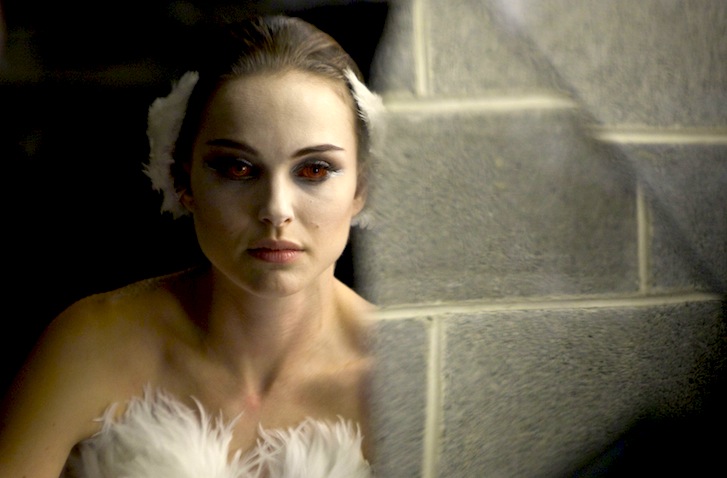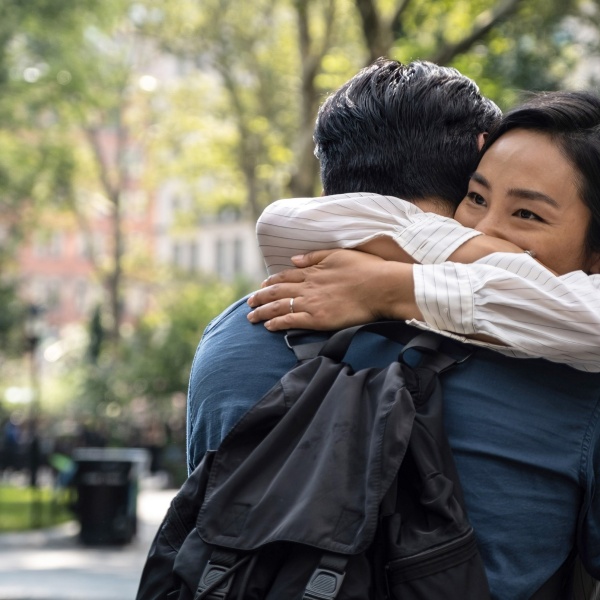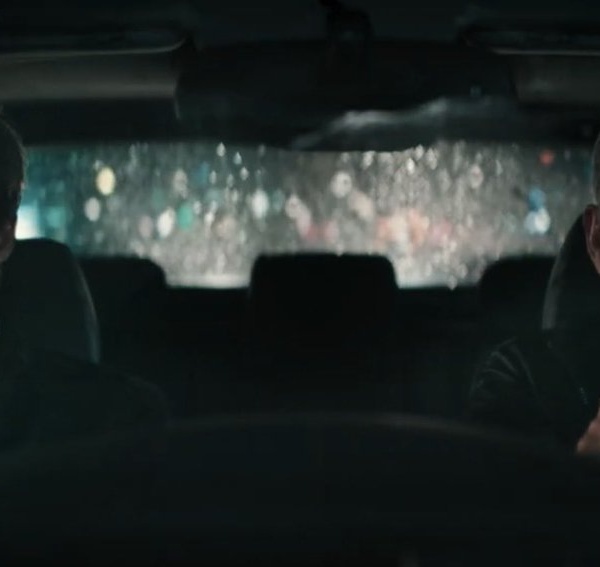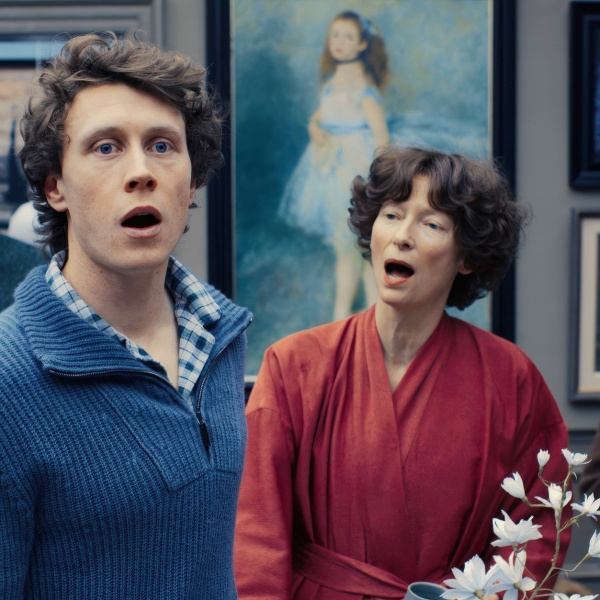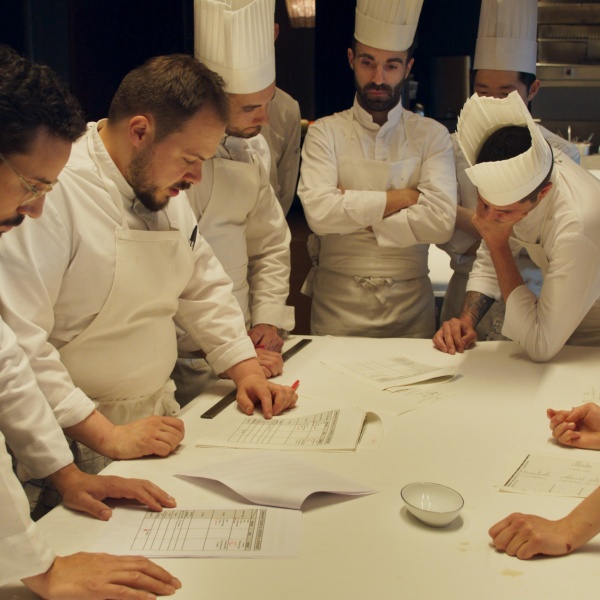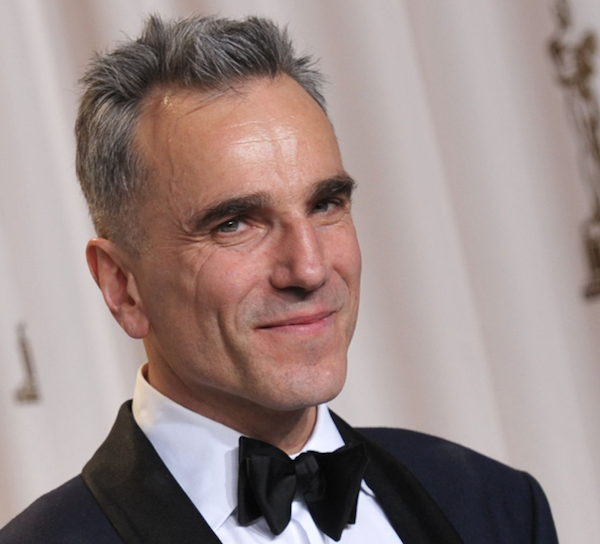Darren Aronofsky‘s “Black Swan” hits theaters today, and it’s easily one of the very best films of the year, and seemingly a culmination of everything that the director’s been working towards for years. It’s also a rarity, in that it’s a serious film about dance — in this case ballet.
There’ve been plenty of dance movies in recent years, but mostly of the cheap-and-cheerful “Step Up” variety, which while they have their charms (it’s hard to watch these films without being impressed by the dance sequences), but they’re not exactly substantial, generally being badly acted, and thin on anything other than excuses for doing the soft shoe shuffle.
But “Black Swan” builds something more significant out of the art form, and between that, and the fact that the dance scenes are so exquisitely staged, performed and shot, we decided it was worth celebrating. So below, you’ll find a list of our favorite dance sequences from films. They’re not all highbrow, and they’re not all from films revolving around music, but they’re all memorable for one reason or another.
“The Red Shoes” (1948)
“Black Swan” cribs from a number of films (not in a bad way, mind you), but none are quite as influential as Powell & Pressburger‘s “The Red Shoes.” Like Aronofsky’s film, it tells the story of a dancer in the ballet of a classic story — in this case, Hans Christian Andersen’s titular fairy tale — while simultaneously retelling that same story. The film’s a classic as a whole, one of the pair’s very finest films, but the key section is the ten minute “Ballet of the Red Shoes,” which sees Moira Shearer’s character dance up a storm in a ballet created especially for the film by composer Brian Easdale and choreographer Robert Helpmann. It’s perhaps the greatest dance sequence ever shown on film — the ballet itself is a feast, but as it runs on, the directors pull off every trick they had available, bursting through the proscenium arch to use POV shots, dissolves and special effects. As you’ll see below, the scene so tremendous that it risks overshadowing the rest of the film.
“Pulp Fiction” (1994)
For a movie as singularly unforgettable as “Pulp Fiction,” full of moments and characters and snippets of dialogue that still resonant or replay in your mind 16 years later, the most iconic moment might be the dance sequence. Thug Vincent Vega (John Travolta) has been tasked with squiring his boss’ wife Mia (Uma Thurman) for a night on the town, which brings them to Jack Rabbit Slim’s, a ’50s themed restaurant that seems to have been constructed entirely inside director Quentin Tarantino’s brain, filled with pop culture relics both noticeable and obscure. It’s here that the two take part in a dance contest, moderated by an Ed Sullivan impersonator and set to the tune of Chuck Berry’s “You Never Can Tell.” It’s here that the meta-textual bubble that is the Tarantino-verse threatens to burst: Travolta, surrounded by a physical reality constructed of pop culture debris, is sending up his own iconic movie star image as a dancer in such films as “Grease” and “Saturday Night Fever” and in the process is creating something bold and new and totally refreshing. He even does dances that reference other moments in popular culture, like “The Batman.” The moment is, for all its smarty pants wink-wink baggage, totally euphoric and rings completely true. Even if you’re a gangster or a gun moll, sometimes all you’ve got to do is dance.
“The Blind Swordsman: Zatoichi” (2003)
Music plays a pivotal role in Takeshi Kitano’s work, as he’s known for teaming with classical composer Joe Hisaishi. But when he took on “The Blind Swordsman: Zatoichi,” he went in a different direction, employing Keiichi Suzuki for possibly his most musical picture yet. “Zatoichi” is a film alive with the rhythms and staccato beats of abbreviated sword fights intermingled with more mundane accouterments like the click-clack of sandals against brick, or the abrasive slam of hammer against wood. This is most prominent in the film’s joyous tap-dance sequence, ending the film riotously and bringing our characters full circle. In their heavily-choreographed soft-shoe number, all those wronged by the tragedy of the story are freed to embrace their inner-Astaire, a wonderful example of Kitano’s oft-ignored warmth and sense of community in his body of work.
“Singin’ In The Rain” (1952)
Is Gene Kelly the perfect human? The fact that the man tap danced on roller skates and with an animated mouse strongly indicate that he was. “Singin’ in the Rain” is by far his most beloved work, and for good reason too. The technicality and precision combined with the pure joyfulness and sense of fun expressed by of Kelly, Debbie Reynolds and Donald O’Connor is so infectious, we just don’t mind when the movie stops for an extended routine. All the numbers move along at such a clip, and are so packed full of stunts and tricks to make you gasp. Even the simple sentiment expressed in “Good Morning” is punctuated with a stunning tap routine by the trio. We love Mr. Kelly for his amazing feats of dance, but the iconic ‘Singing in the Rain” is his most memorable number because it is so heartfelt, silly, and fun. No one does a lovesick soft-shoe like him. And you have to give it up for Donald O’Connor– when paired with the force that is Gene Kelly, he just about steals the whole damn show. “Make ‘Em Laugh” is his chance to showcase his talents with this body-punishing feat of virtuosic physical comedy, which happens so fast you can barely take it all in.
“Happy Together” (1997)
What better way to fix a destructive, shitty relationship than to make a trip to Argentina? It’s all for naught in Wong Kar-wai’s 1997 relationship film, which nabbed him a Best Director award at Cannes. Leslie Cheung and Kar-wai regular Tony Leung play a couple that follow a cyclical pattern of argument, maltreatment, break-up, and reconciliation throughout the movie, despite knowing the futility of their bond. While the film doesn’t shy away from showing their destructiveness towards one another (Leslie’s character takes his new boyfriends to Tony’s place of work constantly, etc.), the subtler dancing scenes, which serve as a greater metaphor for the pair, creep into the consciousness and leave an uncomfortable impact well after the last credit rolls by. Here, a pissed-off Cheung orders his partner to practice the steps by himself, with Leung proceeding to follow instructions, devoid of emotion, hoping only to please his love. It says a million, most importantly that their romantic connection isn’t black and white, and the director shows the complexity of emotions that make up their being. He does it so finely that, much like them, we know it’s a bad idea for them to be together but are fooled into thinking it might be worth all of the pain.
“All That Jazz” (1979)
It might surprise some of you that David Fincher marks Bob Fosse’s autobiographical masterpiece “All That Jazz” among his favorite films, but actually, it makes perfect sense — its portrait of a workaholic film director and choreographer, based heavily on Fosse himself, and constantly on the verge of a heart attack, must surely resonate with the obsessive filmmaker. But even if it doesn’t, the film’s worthy of inclusion on anyone’s list on merit alone, featuring perhaps Roy Scheider’s greatest performance, and, most importantly, a series of killer musical numbers. Virtually any of them could have been included here, but special mention must go to the grand finale. As Scheider’s Joe Gideon nears death, he hallucinates a self-eviscerating variety show in front of an audience of friends and family, which turns into a musical number, set to a version of The Everly Brothers’ “Bye Bye Love.” Fosse was one of the greatest shooters and editors of musical numbers ever, and he’s on cracking form here, with a bravura scene that’s not quite like anything you’ve seen before, and it’s basically responsible for Lady Gaga’s entire career. And the ending, with the sound dropping out, is killer.
“Donnie Darko” (2001)
There’s two moments in this Lynchian sci-fi head trip worthy of note for an iconic dance sequence list, both having to do with Sparkle Motion, the creepy five girl dance crew, headlined by the titular Donnie Darko’s sister, Samantha. We’re introduced to them early in the film via the brilliant steadicam sequence through the halls of the school set to Tears for Fears “Head Over Heels” as they practice their routine that will see them (later in the film) selected for a shot on “Star Search”. When we finally see the routine in its entirety, writer-director Richard Kelly deftly inter-cuts between the performance, played to Duran Duran’s “Notorious,” and Donnie burning down the house of Patrick Swayze’s Jim Cunningham, revealing his kiddie porn dungeon. Both moments push the story forward, but more impressively show how Kelly– who’s since gone on to show that ‘Darko’ (at least the theatrical cut) may have been a fluke after the absolutely shitty likes of “Southland Tales” and “The Box”– has total grasp of his time and setting. “Donnie Darko” has many great moments, but this is one of the most memorable.
“Everyone Says I Love You” (1996)
Music’s always been a key part of Woody Allen’s films — indeed, the more music-led ones of the last twenty years of the director’s career have been the strongest, as a look at “Bullets Over Broadway” or “Sweet and Lowdown” demonstrates. But Allen’s only taken on one full-blown musical in his career, and it’s one of the most chronically underrated films of his career — “Everyone Says I Love You.” Adding musical numbers to an otherwise standard Allen plot gives it a new lease on life, and a game all-star cast, including Julia Roberts, Goldie Hawn, Alan Alda, Natalie Portman, Drew Barrymore and Tim Roth (who, it turns out, has a hell of a voice) are constantly surprising. The film’s pleasures are perhaps best exemplified in the version of Nina Simone’s “My Baby Just Cares For Me,” performed by Edward Norton in one of the earliest roles in his career, and the now-troubled Natasha Lyonne. What it lacks in polish it makes up for in gallons of charm — we defy anyone to watch Norton’s fumbled jump across a table and subsequent dad-at-a-wedding dancing on top of it, and not fall a little for the film.
“Young Frankenstein” (1974)
There are scenes on this list that will have you swooning with the romance of it all. There are scenes that have you blown away by the physical feats involved, or make you fight the urge to get up and dance yourself. But there’s only one that can’t fail to reduce anyone to howls of laughter — “Puttin’ On The Ritz” from Mel Brooks’ classic comedy “Young Frankenstein.” We’ve watched the scene, in which Gene Wilder’s Frederick Frankenstein and his creation (Peter Boyle) perform Irving Berlin’s song, countless times, and not once have we managed to make it past Boyle’s first delivery of the titular line without collapsing into the kind of laughter that hurts the next day. If you haven’t seen it, we won’t spoil it here — just make sure you’re not at risk of doing a spit take, and watch below.
“Ferris Bueller’s Day Off” (1986)
John Hughes’ “Ferris Bueller’s Day Off” is a movie which modulates effortlessly between triumphant teenage joy and more melancholic introspection (it’s the latter that makes every high school kid in America quote the film in their senior yearbook). The “Twist & Shout” sequence, in which Ferris (Matthew Broderick), looking to get a rise out of his Eeyore-ish pal Cameron (Alan Ruck) and smoking hot girlfriend Sloane (Mia Sara), smuggles himself aboard a parade float and defiantly dances (despite the fact that he’s trying to keep a relatively low profile on his day of prolonged hooky-playing). Ferris sways with the background dancers and gamely lip-syncs to the bar mitzvah staple, his hair in a gravity-defying pompadour, and for both the audience of spectators watching the parade and the audience in the theaters, it’s a moment of pure cinematic ascension; you can’t help but smile. As far as dance numbers go, this certainly isn’t the most sophisticated or well choreographed. But then again, it’s not supposed to: it’s an impromptu act of innocuous teenage rebellion and the dance moves’ lack of sophistication makes it all the more infectious (a marching band joins in, as does a builder working nearby, and Ferris’ father, unaware of his son’s involvement, even shimmies a little bit). Anyone who’s ever skipped school has wished they could have accomplished something so awesome, especially while wearing such an awful vest.
“Band Of Outsiders” (1964)
While dance sequences and musicals were certainly not a new element to the film landscape in the 1960s, Jean Luc Godard’s introduction of the random non-sequitur dance sequence may have been just one of the electric New Wave techniques he ushered in during his relatively brief, but arresting halcyon days (when you think about it, his reign only lasted from ’59-’67). Would-be lovers and criminals Anna Karina, Sami Frey, Claude Brasseur philosophize, plan their heist in a cafe over drinks and cigarettes, a jukebox number comes on (score by the great Michel Legrand) and then suddenly the trio fall in place with a chorus line-like dance for the ’60s hipster set (now famously known as “The Madison dance”). So unexpected, the scene is certainly iconic and perhaps one of the more memorable sequences from the French New Wave. To wit, Quentin Tarantino named his production company A Band Apart — Godard’s guys-and-girl-plan-a-heist/ go-on-the lam film is called “Bande à part” in French — and his “Pulp Fiction” dance sequence also feels like another hat tip. Semi-embarrassing/prideful extra credit: This writer once memorized this dance and skipped along to picture in his early salad days.
“Simple Men” (1992)
Take it from an erstwhile Hal Hartley acolyte, not all of his offbeat, deadpan films have aged well. But one that has retained its sense of resonance in the midst of all the stylized quirk is 1992’s “Simple Men,” arguably his best film (and featuring his regular troupe of actors, Robert John Burke, Elina Löwensohn, Bill Sage, Martin Donovan,) and one containing the the nee plus ultra of out-of-nowhere ‘90s dance sequences (in fact, it utilizes some of the same dance steps, though, yeah, there’s not a lot of competition of this title unfortunately). It’s also very much a spiritual sequel or direct kin of Jean-Luc Godard’s aforementioned dance sequence and the indie filmmaker was arguably channeling the spirit of Godard often and interpolating similar ideas in a new context (see this person who’s also made the connection in video form) “I can’t stand the quiet!” Donovan’s character rages and the cadre of misfits who convene in a local town suddenly break the 4th Wall and inexplicably burst into a choreographed dance set to Sonic Youth’s “Kool Thing,” and then quickly go back to the movie about two estranged brothers who become stranded in backwards nowhere while looking for their escaped anarchist father once the song fades away. Arguably it’s an moment expressing the collective frustration the characters feel — like many ‘90s Hartley films, the characters grapple with alienation and existential disaffection — and or maybe it’s just one of the stylistic tics Hartley loved throwing in his films. A laymen might be puzzled, but devotees grinned ear to ear at the time – so, so, so Hartley-esque. It’s all fodder for another day, but if Whit Stillman is considered a forefather to Wes Anderson and Noah Baumbach, perhaps Hartley will one day get his due as another influential predecessor.
“Dirty Dancing” (1987)
So we can all just agree that the end of “Dirty Dancing” is the greatest end to a movie ever right? Is there anything more satisfying than watching Johnny remove Baby from the corner, take her onstage for a shining moment of mambo, they nail the lift, and everyone joins in for a group dance, even lovable curmudgeon Jerry Orbach? Rhetorical question, nope, there is nothing more satisfying. So yes, we love “Time of My Life” and it makes us happy every time we watch it. But let us not forget the cute “Hey Lover Boy,”, which is a perfect example of adding a little dance to a scene and making it sexy, funny and flirtatious. The training montage to “Hungry Eyes,” and the mambo scene where Johnny teaches Baby how to dirty dance for the first time are also fun, but come on, we watch this movie over and over for “Time of My Life.” Just search YouTube to see how many people have attempted this at their own weddings.
“Footloose” (1984)
Dance movies that are NOT musicals sometimes ask the viewer to suspend a lot of disbelief in the process– of course there’s a choreographed routine at the prom, a la “She’s All That,” (true confessions time: this writer actually did do this). “Footloose” is no exception to this phenomenon. Yes, when the ban on dancing is finally lifted in this little podunk Midwestern town, there are somehow kids busting the Bronx’s best breakdancing moves — just go with it, ok? On the more realistic end of things, we are partial to the sweet “Let’s Hear it For the Boy,” where Kevin Bacon teaches Chris Penn (Sean’s dearly departed bro) how to actually dance. Of course, he busts out some overly advanced tricks for a kid who just learned how to snap, but we suggest swiping some of Penn’s random-er dance moves for your next wedding reception. However, if we HAD to choose one (this was a real Sophie’s Choice; we wish this entire feature was about “Footloose,” we haven’t even mentioned Sarah Jessica Parker yet!) we’d have to say the more iconic number is also the most outlandish– Bacon’s Olympic-worthy gymnastics (there is a high bar portion) angry dance in the barn to “Never” by Moving Pictures. Ever felt so frustrated and stifled there’s nothing left to do but dance it out? “Never” is the epitome of that feeling and Bacon’s sweaty, acid-washed intensity (coupled with the athleticism of his dance double) just makes it all work. We buy it.
“Flashdance” (1983)
We’ll include “Flashdance” even though Jennifer Beals barely did any dancing other than shimmying that mop of hair around (the heavy lifting was done by a dance double). Fun fact: “Flashdance” was produced by Jerry Bruckheimer and the dance numbers are executed like bombastic action sequences. The famous water bucket scene in the strip club is all back-lighting and flying water droplets; the climactic “What a Feeling” is a gold standard of the finest ’80s choreography has to offer (see also, “Cats,” “Stayin’ Alive”), but the “She’s a Maniac” rehearsal number, which configures Alex’s body as a sinewy finely-tuned machine, is really the one that has left the most indelible impression on pop culture. Much like “Footloose,” this is the dancer all alone, just dancing for the sake of sanity, the filmmaker using the dance to illustrate this aspect of the character. Turns out David Cronenberg and Brian DePalma both turned down the director’s chair before Adrian Lyne stepped up to the plate and it would be fascinating to see what those other two guys might have turned out with the story of a girl with big dreams working as a welder by day and an exotic dancer by night. It’s still one of the most iconic ’80s dance films, was a huge box office smash, AND it also introduced the world to break dancing with a short cameo by the Rock Steady Crew.
“An American In Paris” (1951)
How do you finish “An American In Paris?” You’ve just enjoyed 2 solid hours of what many describe as a perfect film, with Gene Kelly charm, Gershwin classics like “I’ve Got Rhythm,” the coquettish gamine Leslie Caron in her big screen debut, and enough song and dance to fill two musicals. What more can be done? If you’re Vincente Minnelli, you swing for the fences with a 16-minute, $500,000 (an outlandish sum in those days) psychedelically trippy ballet sequence, and bill the thing as “The Greatest Dance Entertainment Projected on The Screen” in the trailer. Which is probably true. Minnelli let choreographer Kelly unleash every tool in his arsenal and the result is something way ahead of it’s time, and a fine example of Kelly’s contemporary style melded with traditional ballet (Caron’s milieu). Caron and Kelly have riveting chemistry, and these expressive technicians are allowed to play throughout multicolored ever-changing sets and multiple costume changes. It’s really a short film unto itself. Kelly choreographed the entire picture, and earned his only Oscar that year, an honorary one for his versatility as an actor, singer, dancer and achievements in choreography. And it paid off for Minnelli with his own little gold man for Best Picture. It goes without saying that this is a must-see. (Trailer below, unfortunately finding the real thing on Youtube has proven to be difficult.)
“Before Sunset” (2004)
This writer has heard arguments that Richard Linklater’s follow up to “Before Sunrise” is a perfect film, and it’s hard to deny that when you look at the final ten minutes, as Julie Delpy brings Ethan Hawke to her apartment, serenades him with her beautiful “A Waltz For a Night” and then proceeds to become somehow even more adorable as she mimics Nina Simone while “Just in Time” plays on her stereo. “Hey baby, you’re gonna miss that plane,” Delpy says. Were right there with Hawke as he replies, in the only way a sensible human being with blood pumping through their veins would, “I know.” Goddamn, that’s a perfect ending, at least.
“Cabaret” (1972)
The opening number from “Cabaret”, “Wilkommen” quite literally welcomes you into the world we will be inhabiting for the duration of the film. Dark, tattered, tacky opulence is the name of the game in “Cabaret,” and look no further than the languid, zombie-like Kit Kat girls bedecked in sparkly tap pants and frowns, shuffling sexily around the the preening, lipsticked EmCee welcoming you to the show. Bob Fosse won the Best Director Oscar for this film in 1972 and his skill of combining movement, style and story is in top form. He takes traditional jazz dance movement and skews it– making it crooked, turned in, drooping, yet also perfectly placed, and in “Cabaret,” he achieves a lazy raunchiness that is the perfect backdrop and metaphor for this dark story. “Mein Herr” is the more distilled, refined version of this aesthetic, and Liza Minnelli is fantastic in it, but “Wilkommen” builds the stage on which the rest of the numbers shine. (No embed unfortunately, but you can watch it here)
“Sweet Charity” (1969)
Bob Fosse’s 1969 film adaptation of “Sweet Charity” starring Shirley MacLaine showcases his inimitable skill at weaving story and movement into one inextricable piece. “Big Spender” introduces the dance hall hostesses in a number that strips down their everyday blowsy come-hither propositions to their essence and builds them back up into an intricate and exquisite dance number. The perfectly timed and placed gestures in Fosse’s signature floppy yet posed staccato jazz are interspersed with limb-flailing, hair-whipping swinging 60s dance. Fosse’s greatest strength is his restraint, and in “Big Spender,” the smallest twirl of a hand draws the audience’s focus like a laser beam. The piece climaxes in a whirl of teased hair and flying limbs, and as the women command “fun, laughs, good time,” you start to wonder who really has the upper hand in this situation.
“Top Hat” (1935)
We’re gonna cheat this entry a bit, to stand in for all of Fred ’n’ Ginger’s filmic oeuvre, to which we could (and should, IMHO) probably dedicate an entire list of its own. And why this particular film and not, say, 1937’s “Shall We Dance” (which features a great rollerskating scene) or the 1936 double-bill of “Follow The Fleet” (notable for Rogers’ awe-inspiring sailor bell-bottoms) or “Swing Time” (Ginger’s personal favorite) to name just a few? Well, “Top Hat,” aside from being the duo’s most successful film, is perhaps the perfect distillation of their charm and chemistry, liberally peppered with some of the most hummable of Irving Berlin’s tunes. Of the bigger numbers “Top Hat, White Tie and Tails” is Astaire’s solo outing, and if you’re slightly unconvinced of the star quality of this gnomish man, the second he does that pretend assassination thing with his cane, you’re hooked. “Cheek to Cheek” and “Isn’t This a Lovely Day …” are two-handers (and was ever a woman better at the difficult task of being sung-at than Ginger Rogers?), numbers that never outstay their welcome and never lose their frothy, fizzy-lifting-drink joyousness. This is not dance as social commentary or even personal expression: it is dance as visual confection by two past masters who make it look as easy as falling off a log and a lot more graceful. And yes, every time you see them together Rogers does prove the truth of the Ginger Rogers feminist paradox – that while she never got as famous as Astaire, she can clearly do everything he can, backwards, and in heels.
“Chicago” (2002)
Rob Marshall‘s Oscar-winning adaptation of the Kander & Ebb musical remains divisive to this day, but this writer firmly believes that it’s aged well in the last decade or so. It’s arguably overly indebted to the theater version, but Rob Marshall‘s stage bound take to the musical numbers works infinitely better here than in last year’s “Nine,” and some of the sequences really crackle, none more so than “Cell Block Tango.” Performed by Catherine Zeta Jones, along with Susan Misner, Denise Faye, Deidre Goodwin, Ekaterina Chtchelkanova and pop star Mya, it has an oddly rhythmic nature to it that works terrifically on film, and the sexually charged, murderous dances at the heart of it are probably the best expression of the film’s fantasy conceit (even if the use of red handkerchiefs are a bit drama school). Considering Marshall’s background as a choreographer, it’s not surprising that the dancers are unbelievable, but he shoots the hell out of the scene as well, messing around with shutter speeds in a way that’s over-done in action sequences, but works like gangbusters here.
“The Fisher King” (1991)
Mad genius Terry Gilliam has always been more about satire than sighs, but his (inevitably) quirky dramedy “The Fisher King” has a few moments that will make even cynics swoon. Robin Williams is damaged, homeless hero Parry (as in “Parsifal” the knight of the grail legend, the inspiration for the film), who has a broken heart and an equally fractured mind. However, he thinks he’s found his soul mate in painfully shy Lydia (Amanda Plummer), and he waits for her in the middle of rush hour at New York City’s Grand Central. When he catches sight of her, Parry follows Lydia, only to have things slow down as commuters (and a group of nuns) break into a spontaneous waltz through the glittering lights of the main hall. The mass dance is only Parry’s dream–and it only lasts for a few minutes–but it’s as much an ode to the transformative power of love as it is to the city itself.
“Oasis” (2002)
In Lee Chang-dong’s Korean masterpiece, a man shy of a few bricks (Sol Kyung-gu) and a woman with cerebral palsy (Moon So-ri) share an unlikely (and beautiful) romance, finding a comfort with each other that their families have failed to provide. So what is a perfect couple in a movie without their own dance scene? In one of the few times Moon breaks character and physically illustrates her liberating happiness, the pair create their own oasis and bust a move in her empty apartment. Joining them are an elephant, an Indian woman with confetti, and a young boy in a white turban and shorts… not to mention teary eyes and sniffly noses for one of the most affecting scenes committed to celluloid. Be warned, the clip below does include the scene near the end, but is otherwise a selection of scenes from the film edited to “True Colors” by Phil Collins, and should therefore probably be watched with the sound down.
“Rad” (1986)
Words cannot express the joy we get from seeing BMX bikes jumping in slow motion in a gymnasium as Jesse Katsopolis’s lady friend glides across the screen, all set to the sweet, sweet sounds of “Send Me an Angel” by Real Life. It’s possibly one of those embarrassing films from your youth, something you thought was awesome as a kid, but if you saw now you’d wonder if you had a learning disability growing up. And how about those drunken old men, just hanging out at the dance hoping to find the next BMX star? This kind of scene could only come from ‘80s.
“Southland Tales” (2006)
In Richard Kelly’s kaleidoscopic sci-fi mélange “Southland Tales,” anything should be possible. This is a movie, after all, set in a post-apocalyptic (but not-too-distant) future, whose central plot involves time travel, dimension-hopping, and a perpetual motion machine just offshore California. The cast alone reads like someone was throwing darts at a board marked with the most bizarre collection of character actors ever assembled – where else would Dwayne Johnson perform alongside Jon Lovitz, Christopher Lambert, Mandy Moore, Wallace Shawn, and the dwarfish woman from “Poltergeist?” Still, when the “plot” of the movie slips away for the moment to reveal a dance sequence, led by Justin Timberlake’s drug addicted Iraqi vet Pilot Abilene, you’re stick shocked. It might be the movie’s most transcendent moment. Or its most bizarre. Or both. In the sequence, Abilene, who acts as the film’s de-facto narrator, takes Liquid Karma, a kind of slushy offshoot of the aforementioned perpetual motion machine. It causes him to enter into a psychedelic trance, translated here as a mini-dance sequence set to The Killers’ “All the Things That I’ve Done.” The dancing isn’t all that great, although there are a lot of cute girls in nurse outfits (for some reason) and Timberlake does a nifty little sway with his body that betrays the charismatic stage presence underneath, but the sequence perfectly sums up the movie’s merrily overarching WTF-ness, even if it’s not as totally baffling as the scene in which two cars start fucking.
“The Blues Brothers” (1980)
Yes, it’s way too long and its reach exceeds its grasp just as often as it doesn’t, but the “Blues Brothers” remains one of the rock ‘n roll road movie benchmarks, although the film nearly peaks before it’s halfway through. The story follows Jake and Elwood, two misfits “on a mission from God” to save the Catholic orphanage where they grew up. So where better to get your bearings before you begin your mission than with a stop at a church presided over by Reverend Cleophus James (James Brown)? The brothers walk into a rousing, Southern style service that takes the standard effusive vocal call and response proceedings and jacks it up into a full on singing, dancing rave up. James Brown shimmies behind the pulpit, sweat flying, while parishioners break more moves in front of pews on a Sunday morning that at a club on Saturday night. But that’s not all. Divine revelation is just around the corner, and though Elwood nearly misses it (“What light?”), never have two words (“The band!”) carried so much meaning.
“The 40 Year Old Virgin” (2005)
We have to admit, we really didn’t like it the first time around, but it took another viewing (or two) for it click and realize that Judd Apatow’s decision to close “The 40 Year Old Virgin” with a song and dance number set to The 5th Dimension’s “Aquarius/Let The Sunshine In” was kind of genius. Because what better way to capture the post-coital relief/happiness/satisfaction of losing your cherry than with the hippie anthem that more or less defined the free lovin’ 1960s. It’s great fun to watch the cast dance and sing — and we use both of those terms very loosely — as they romp across a grassy hillside. Also, extra points to Romany Malco for sexing up his verse and props to Paul Rudd for bravely attempting (with hilarious consequences) to scat. Nope, it’s not perfectly choreographed (it looks like they made most of it up on the day of shooting) and the singing can be charitably described as “unique,” but it’s a fun way to come down from a film that worked so hard for two hours to keep your funny bone up.
“You Got Served” (2004)
No Dance Feature would be complete without the inclusion of the hugely influential 2004 film, “You Got Served,” the Godfather of the wildly popular 2000s genre, the Dance Battle Film. Where would our culture be without “You Got Served”? Would we even have “Step Up 2: The Streets”? “Stomp The Yard?” “Planet B-Boy?” “America’s Best Dance Crew?” “So You Think You Can Dance?” “Dancing with the Stars?” Justin Bieber’s Swagger Coach?! Would the world love dance as much as they do now? Perish the thought. From the opening seconds of the film, “You Got Served” introduced the world to our newest favorite pastime, the dance battle, and defined those parameters on their own terms. Pounding bass, acrobatics, gender play, mockery, humor, high stakes intensity, and moves that are both gritty and rough but finessed with expertise. And don’t forget the most important ingredient: swagger for days. Sure, there are better dance battles on film– showier, in 3D, with more crazy acrobatics– David LaChappelle truly captured the essence of krumping on celluloid in “Rize”, and the Ichigeki crew of Japan demonstrated the most emotionally-moving, samurai-like intensity in their breakdancing in “Planet B-Boy,” but “You Got Served’ showed us how the game is played, and reminded us that it’s cool for guys to dance. Fred Astaire and Gene Kelly are smiling down on you, boys.
Honorable Mentions: One of the biggest absences here is probably the finale of “42nd Street,” one of the earliest, and still arguably one of the best movie musicals, and one of Busby Berkeley’s best pieces of work. “West Side Story” and “Mary Poppins” are both classic musicals stacked full of great dance scenes (the picks would probably be “America” in the former and “Step In Time” in the latter.)
Baz Luhrmann’s a pretty great exponent of the art-form, with the tango to “Roxanne” in “Moulin Rouge” being a highlight of that one, although our personal pick would probably be the final dance in “Strictly Ballroom.” Stephen Daldry’s “Billy Elliot” is another somewhat obvious one, particularly with the dance to The Jam’s “A Town Called Malice,” while “The Breakfast Club” features a particularly iconic dance.
More recently, both “Slumdog Millionaire” and “(500) Days of Summer” had memorable dance scenes, although perhaps our favorite in recent years came in the charming end to “Fantastic Mr. Fox,” as the stop-motion woodland creatures bust a move to The Bobby Fuller Four’s “Let Her Dance.” There’s countless others we didn’t get to — what are your favorites?
BTW, for more awesome musical moment pics, not necessarily dance sequences but definitely some involved, check out “Scott Pilgrim Vs. The World” director Edgar Wright‘s “Top Ten Favorite Musicals (& Five Rock ‘N’ Roll Movies),” a feature he wrote for us himself earlier this year.
— Drew Taylor, Gabe Toro, Katie Walsh, Oli Lyttelton, Rodrigo Perez, Christopher Bell, Erik McClanahan, Jessica Kiang, Kevin Jagernauth
